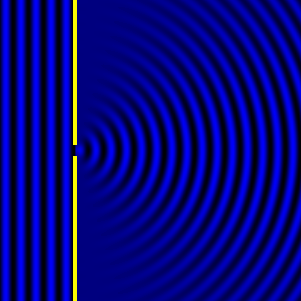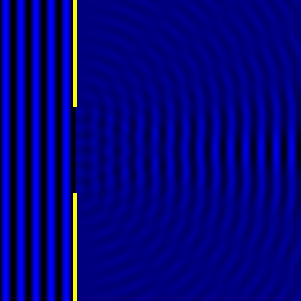Joe McKeown (Talk | contribs) |
Joe McKeown (Talk | contribs) |
||
| Line 81: | Line 81: | ||
<p style="font-size: 18px;">Digital holographic microscopy makes use of diffraction. This a physical phenomenon wherein objects (or apertures) in the path of a source of waves will create patterns in the waves. These patterns depend on the shape of the objects themselves. Since electromagnetic waves are, somewhat unsurprisingly, waves, it is possible to use the diffraction of light to create patterns that we can see. | <p style="font-size: 18px;">Digital holographic microscopy makes use of diffraction. This a physical phenomenon wherein objects (or apertures) in the path of a source of waves will create patterns in the waves. These patterns depend on the shape of the objects themselves. Since electromagnetic waves are, somewhat unsurprisingly, waves, it is possible to use the diffraction of light to create patterns that we can see. | ||
</p> | </p> | ||
| − | <div class="row text-center" style="padding-bottom: | + | <div class="row text-center" style="padding-bottom: 20px;"> |
<div class="col-md-6"> | <div class="col-md-6"> | ||
<img src="//2017.igem.org/wiki/images/3/34/DiffractionGIF1.gif"> | <img src="//2017.igem.org/wiki/images/3/34/DiffractionGIF1.gif"> | ||
Revision as of 14:01, 3 September 2017
Digital Inline Holographic Microscopy
How does it work?
Digital holographic microscopy makes use of diffraction. This a physical phenomenon wherein objects (or apertures) in the path of a source of waves will create patterns in the waves. These patterns depend on the shape of the objects themselves. Since electromagnetic waves are, somewhat unsurprisingly, waves, it is possible to use the diffraction of light to create patterns that we can see.


The above images (source: Wikipedia - Diffraction Formalism) show examples of patterns being formed in wavefronts by apertures in the path of otherwise uninterrupted waves.

